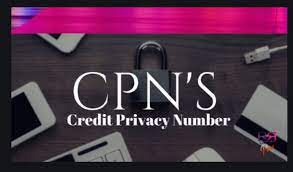Car buying is the one area of my financial life that I can say for certain I have repeatedly made mistakes that have cost me tens of thousands of dollars. I’m not exaggerating either- I have actually purchased or leased 6 cars in the last 10 years. I really can’t put my finger on why I’ve been so financially irresponsible in this area given that with other major purchases like buying my home, leasing my office space, and making business technology investments I’ve always prided myself on doing my due diligence and finding the best deals. All I know is that I’ve always been so overwhelmed with the process, that I’ve just given up- feeling like the odds were against me in this area because of the lack of transparency in the industry and expecting to overpay no matter how much research I’ve done.
Writing this now, I admit it’s pretty stupid, but it’s the truth. This past November, I got a letter in the mail from the dealership that sold me my last car letting me know that with 6 months to my lease expiration, it was time to start thinking about my next car. I determined when I got that letter that this time, I’d break my bad car buying habits and use the time I had wisely to build new, good, car buying habits that I could be confident would save me money- and I’m happy to say I did!
I figure that if I’ve had so much trouble with this over the years, there have to be others who are in the same boat. So without further ado, here are the biggest mistakes I’ve made when it comes to car buying and leasing and the biggest wins I had this most recent car transaction.
Mistake #1: Thinking All Dealerships Are The Same
With all of my cars until this one, I browsed online a bit to see what kind of car makes and models I liked, but I never had a list of exactly what I wanted to test drive and a game plan of what dealerships to hit. Instead, I’d casually browse until I saw a car I liked enough to see in person, and then I’d head to the dealership that had it knowing that if it didn’t end up being what I wanted, the dealership would have other car brands on the lot that I could check out. Because of that, my car shopping was usually one-stop. I’d always get a “deal” in that I never paid the sticker price, but I never proved that the deal was really the best one available because I never did the research.
Because I was always buying used, I’d convinced myself that shopping around and comparing apples to apples wasn’t really possible because of different mileage, trim, features, etc. and that if I walked away and tried to shop around, the car or the deal would be gone. In reality, I was really just making excuses because car shopping is a huge time suck and I didn’t want to have to spend 2 hours or more per dealership trying to negotiate pricing and spend time researching at home when its, frankly, uncomfortable. If I’m honest, at one point I also felt guilty about not buying the car with the salesperson who helped me figure out what I wanted to begin with because being a small business owner I know how crappy it is to have people who present themselves as potential clients take advantage of your expertise and never end up hiring or referring you, and I didn’t want to be that person either.
Solution
With this car purchase, I had a game plan. I asked my network for suggestions on what car makes and models they liked and what dealerships they liked, and I made a list of cars I wanted to check out in advance of shopping. Before I checked them out, I also did a bit of research on how they ranked in terms of driver satisfaction, gas mileage, etc. and I made sure to play around with different payment calculators to see whether what I had on my list was in my price range.
Anything that was more than I wanted to spend was crossed off my list before even going to the dealerships and I committed to not test drive any of those. I knew that going to one dealership made it hard to have perspective, and I also knew that shopping right when I needed a new car instead of in advance made it harder to walk out. So, I allocated an entire day to car shopping, had a plan to hit 3-4 dealerships that day, and did this 2.5 months before my lease was up so that there was no way I was making a purchasing decision that day.
Just going to multiple dealerships that day taught me so much and that alone saved me at least $5,000. At the three different dealerships I learned several different things:
- The slower and more obscure the dealership the more desperate they are for the sale and more willing to drop the cost significantly
- Some dealerships are willing and able to cover the cost of remaining lease payments without rolling them into your costs/raising your payment
- Some dealerships have discounts for working for certain companies, alumni connections, and other company affiliations.
None of these had occurred to me or become clear in my past 5 car buying experiences, but I used this information to ultimately buy my car from a completely different dealership who was willing to cut me a check for $1400 for my remaining lease payments after cutting the quoted payment by $84 per month and increasing my lease mileage from 10,000 to 12,000 per year. I also got the first year’s maintenance for free. I found the dealership by going home armed with the info I learned from shopping and searching for the car I wanted at different dealerships in MA.
I sent messages to each dealership letting them know I’d had a bad experience at the other dealership I’d visited earlier but really liked the car and gave them the pricing and terms I wanted. I also reached out to the sales associate who got me into my last lease and asked if there were any sister dealerships in his company network that might have the car I was looking for so that their chain could have the chance to earn my business. Ultimately, the dealership he ended up connecting me with was the most competitive and got me everything I wanted and into my new lease early with no additional costs.
As an aside, one of the other dealerships I’d visited that day and had been communicating with told me he couldn’t accommodate what I wanted and that no one could. When he found out I was on the verge of closing the deal with another dealership that could on a different car- he came back with a price and terms that beat the deal. Ultimately the $20 per month savings he presented wasn’t enough for me to choose the car he had versus the car I ended up with but it was a lesson for me that there is almost always more wiggle room.
Mistake #2 Making Decisions on What To Buy/Put down Based on Payment
The second big mistake I’d made in the past was letting the sales and finance people manipulate the numbers based on what payment I said I wanted. Dealerships tend to roll in costs so that you’re paying more money than you realize but are comfortable with is based on the monthly payment obligation. I’d had negative equity, disposition costs, etc. all rolled into my loans thinking I was getting more for my previous car than I actually was because there was so much back and forth and not actually realizing what happened until the next one or the one after. So frustrating.
The truth is, a car salesman’s job is to sell you a car, and the better the deal or more affordable you perceive the transaction to be, the easier it is for you to buy. This is why I’ve never had a sales person show me payments and quotes without more money than the up front costs down. Psychologically, it might be easier to put down $5000 to lower your payment by $140 per month, and you might feel good because now you feel like you have a “more affordable” monthly payment, but at the end of the day you’re still paying the same purchase price on the car – you’re just paying a chunk in advance and saving a bit in interest. I knew that, but I’d get so exhausted in the negotiation process that when it finally came down to it I’d play the payment game. Not this time.
Solution
This time, I resolved to put nothing down. This allowed me to see exactly what the up front costs were, compare them across dealerships, and negotiate them better. I was also able to clearly see what each car really cost, factoring in the depreciation (since it was a lease) and making a decision on what to buy based on how much value the car would hold, what my costs would be if I decided to buy at the end, and actually finding a payment I was comfortable with. It reduced the back and forth and games and helped me feel more confident in my decision making around the purchase. It also meant that when one of the dealerships agreed to cover my lease payments and added this into the lease costs, I noticed right away.
Mistake #3 Not Properly Evaluating Warranties and Cost of Maintenance
This mistake has cost me over and over again in different ways. Not understanding the costs and benefits of warranties and maintenance has meant bad decisions made at a high cost. On my first few cars, I was scared about what could happen and bought all the warranties. But I realized that these increased my payment significantly and I didn’t actually use most of them. So on my next car, I went to the complete other extreme and didn’t get any of the warranties- big mistake. I passed on the wheel and tire warranty and ended up spending more than the cost of the warranty to fix a tire and rim after hitting a pothole, and then when the same car got totaled- I was underwater because I didn’t have gap insurance.
One of the main reasons I didn’t get any coverage that next time around was because I’d moved from a non-luxury to a luxury car and the warranty costs were significant. I also expected maintenance to be more expensive and I didn’t want to raise my payment with warranties if other costs were going to be higher. What not having the Gap coverage in the end meant was: not only did I not have a car, but I owed money to the bank to pay a balance off my loan too. Big money. What I should’ve done was price out what I needed and get a cheaper car if I couldn’t afford it.
Solution
Ask about and research maintenance costs and warranty costs DURING the car buying process and not in the finance guy’s office. I found out through asking these questions that the car I wanted most had Gap insurance included in the lease contract – that was one thing I didn’t need to worry about. I also found out that part of the package was free maintenance for a year. I knew I only wanted a maintenance package if it was going to save me money and that the only other coverage I might need was wheel and tire coverage given I live in New England and have had that experience previously.
Everything else was a no-go for me. When I got to the finance guy’s office and he went over the warranties, maintenance was only cheaper in the package if I bought a bunch of other warranties I knew I didn’t need- so I skipped it. I asked how much normal maintenance was so that I could do the calculation, and when I saw it didn’t make sense I figured out how much I’d need to budget each month to cover the maintenance once a year and it was less than the payment for the warranty. Wheel and tire was also cheaper as a package, but I didn’t need the other offerings so I stuck to my guns. Ultimately, my payment only went up by $21 as a result of the new warranties and I walked out happy feeling like I finally got this right.
The moral of the story…
If something financial is overwhelming you, you are likely making decisions related to it that are costing you money. Changing the habits related to that thing is hard, but the payoff can be huge. Running the numbers in advance so that I knew it was financially best for meto lease again- not buy, and knew exactly what I wanted my payment to be under, and what was important to me allowed me to walk away when I needed to, leverage competition, and end up with a new car I love, earlier than expected, for much less money than I expected to pay.
Now, I can no longer say I hate car shopping.
Source: Nicole Peterkin [https://blog.peterkinfinancial.com/]








